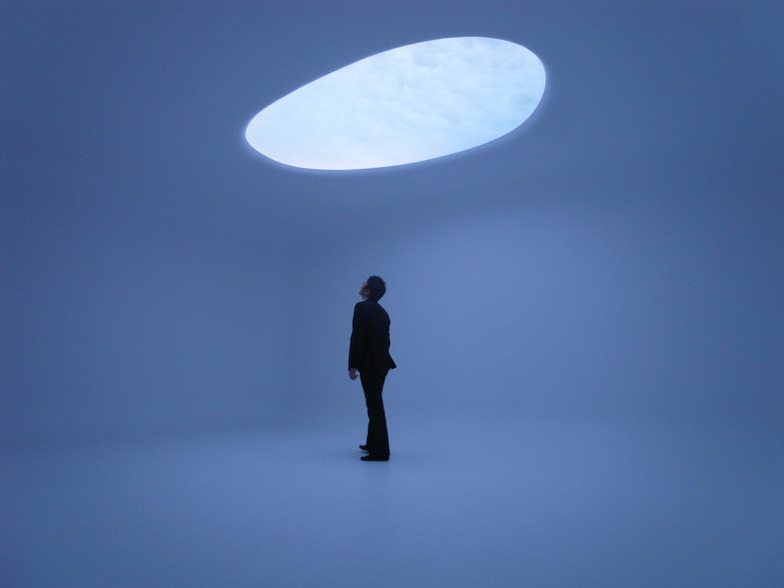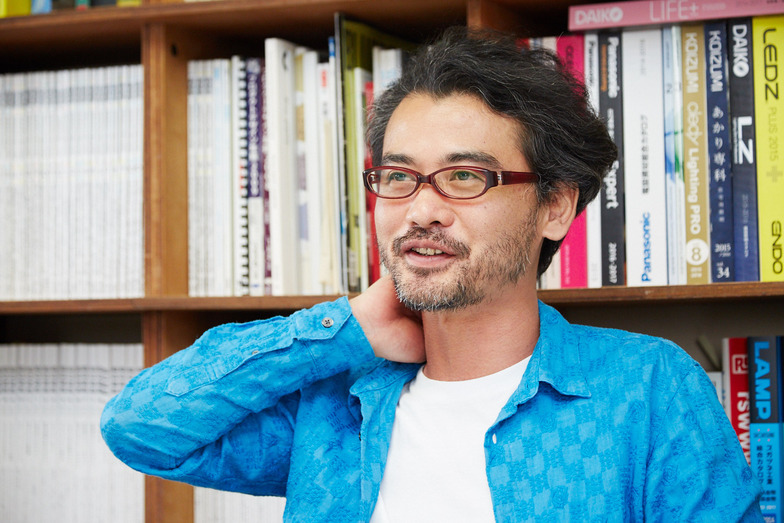"Meeting the People We Want to Meet!" Episode 11 features Takuya Fujita from Dentsu Inc. Event & Space Design Bureau meeting Izumi Okayasu. As a lighting designer, Okayasu has collaborated with numerous architects and continues to create compelling light artworks. While lighting is often treated as a supporting role in spatial production, light design profoundly influences human emotions. We explore Okayasu's approach and creative philosophy that delves into this realm.
Interview and Composition: Aki Kanahara, Dentsu Inc. Event & Space Design Bureau
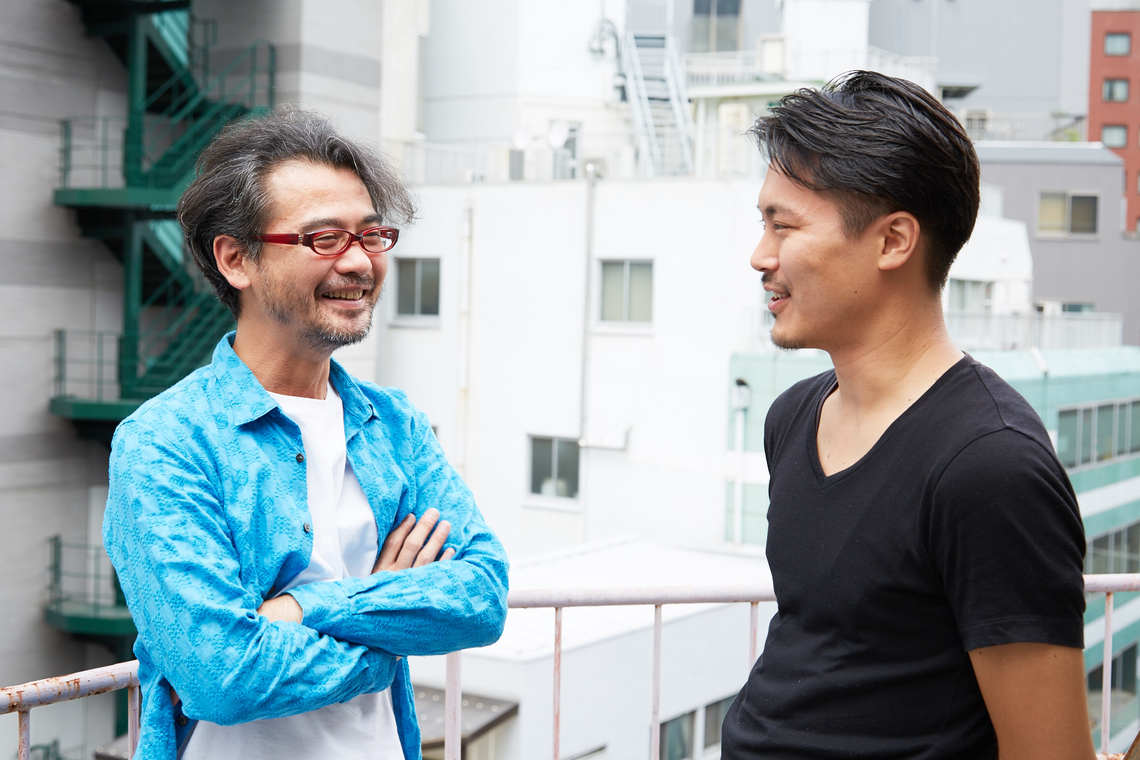
(From left) Ms. Okayasu, Mr. Fujita
Understanding the characteristics of light and designing it appropriately
Fujita: What new applications for LEDs are you considering?
Okayasu: It's about how they look. When LEDs first appeared, the negative impressions were that the light was cold or dirty—they were described in pretty harsh terms. But back then, that was actually the case.
Fujita: What kind of state would you call "dirty"?
Okayasu: The color wouldn't settle into a single hue. It was white, but a slightly pinkish white.
By chance, in 2010, Toshiba wanted to create an LED market in Europe. Architect Makoto Tanijiri invited me to the Milan Salone, and what we created there involved passing smoke through a space with LEDs placed behind it, using the LEDs to change the smoke's color. Since the ability to reproduce full color is LED's advantage, I wanted to properly showcase that.
Furthermore, by using smoke as a fluid filter, colors blend together, and the brightness of the light also mixes, so the variation in the LEDs becomes imperceptible. I believed that if we properly created that situation and a space to experience it, it could be truly moving. In other words, I focused on how to bridge the gap between LEDs and humans. I feel like I'm still continuing that kind of experiment today.
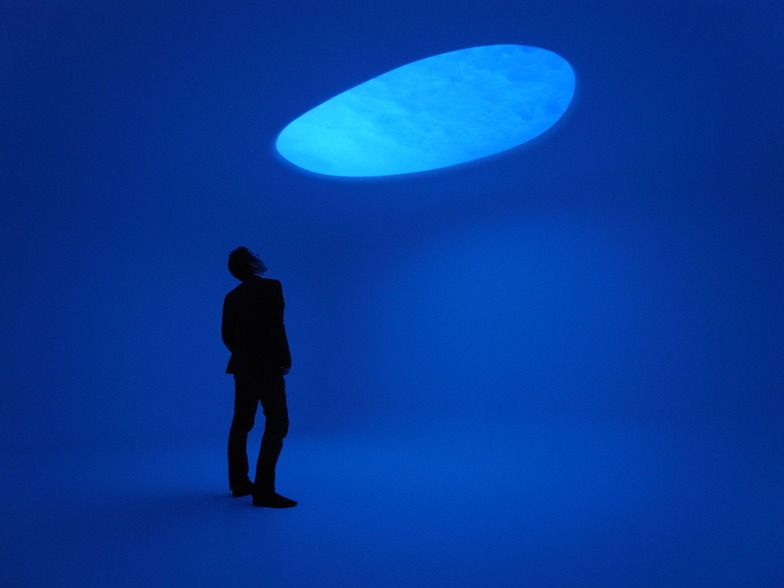
2010
Toshiba Milano Salone "Lucèste"
Suppose Design Office
Fujita: Turning a crisis into an opportunity—that's really fascinating. Speaking of fluid dynamics, Toshiba's 2011 water installation was similar, right?
Okayasu: That's right.
We did it with architect Tsuyoshi Tane. One characteristic of LEDs is their high-speed responsiveness—they react instantly when a signal is sent. Previous light sources had their lifespan directly affected by actions like turning them on/off or dimming, but LEDs don't suffer from that. We wanted to turn that value into an attraction. So, when we shone rapidly flashing LED light onto water falling in a stream-like cascade, it looked like tiny sparks were dancing in the air. It creates this flickering spark effect.
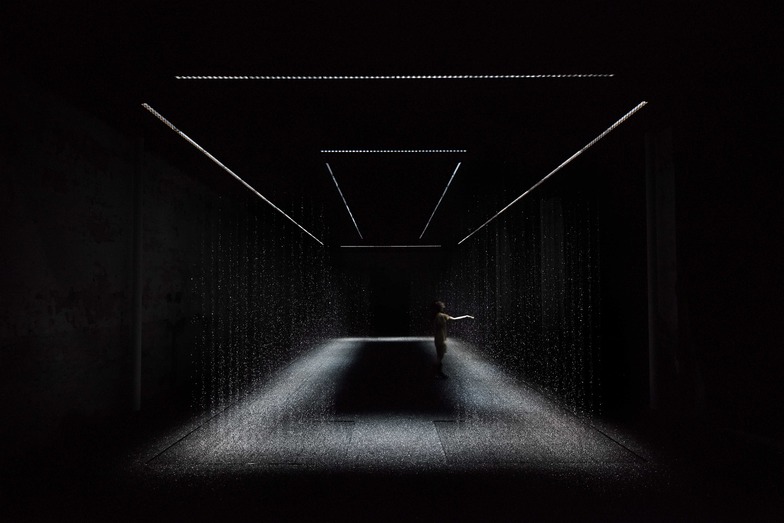
2011
Toshiba Milano Salone "Luce Tempo Luogo"
DORELL.GHOTMEH.TANE / ARCHITECTS
©Daici Ano
Can light become "portable"?
Fujita: Is there a methodology you're targeting next?
Okayasu: Right now, our major goal is portability. For example, if you go way back in history, say over a hundred years ago, you reach the era when people used fire, right? Back then, if you had just one candle, say, you could only get about 20 lux of light within a roughly 20-centimeter square area centered on it. But with modern technology, if you have a single 60-watt bulb in a six-mat room, you can achieve equivalent brightness throughout the entire space.
I imagine that when incandescent bulbs were invented, as part of the design process of adapting life around the bulb, the appropriate fixture shapes and various other elements were determined. Building on that, forms like downlights or spotlights emerged, leveraging the characteristics of incandescent bulbs. When light relied on fire, it was always close to the body, with the flame and the person moving in tandem, one-to-one, rather than having a single light source in the space.
Once incandescent bulbs became available and high-power versions emerged, they could provide sufficient brightness even when placed far away. This meant they no longer needed to be close at hand. Plus, incandescent bulbs themselves are hot and pose an electrocution risk. So, in terms of utilizing the characteristics of incandescent bulbs, lighting fixtures naturally moved toward being mounted on ceilings. However, LEDs are fundamentally low-voltage devices; they are semiconductors that operate on direct current. This means there's no risk of electrocution, and they generate very little heat.
Since engineering has evolved this way, shouldn't light become portable too? Everyone has a cell phone in their pocket, and it wouldn't matter if the phone became a light source. Thinking along these lines, I wonder if we can design something truly enriching through the portability of light.
Separately, on a personal interest level, I still have an unstoppable fascination with fluids, but I'm also incredibly interested in the resolution of things. I've always thought about creating something that stirs primal human emotions through the act of changing the resolution of a phenomenon.
Currently, I'm creating an installation for the permanent exhibition at the National Treasure Hall of Kasuga Grand Shrine, opening October 1st. Since it's permanent, I plan to incorporate various limited-time experiments.
Leaving technology solely to scientists won't enrich our lives.
Fujita: Globally, there's a very strong momentum to engage effectively with technology. How do you approach technology, Mr. Okayasu?
Okayasu: If we leave how technology is used solely to engineers and developers, it often leads to a worldview that seeks to control people, and frequently fails to connect with true enrichment. Unless technology fits into a carefully designed lifestyle one step ahead, I feel it can make life feel strained.
For instance, if using the toilet in the morning reveals your health status, it could become obligatory to go specifically for health checks. That risks turning into a movement that dominates people. So, I believe we must constantly think ahead and envision what comes next. We need to constantly consider what constitutes the ultimate comfortable living experience or the ultimate enjoyable picnic—ideas unrelated to technology—and then figure out how to apply technology to them. Otherwise, both end up being merely adequate.
It's the same with everyday work. If you start thinking about things only after a client makes an offer, you'll only end up with something that barely meets the requirements within that scope. But if I keep thinking about ultimate ideas for various everyday actions in my own way, when an offer comes along, I can overlay that idea onto it.
Always prepare the second of the "five senses" beyond sight
Fujita: While sight strongly influences human perception, lighting can approach areas beyond vision. For example, it might not directly target touch but create a sensation akin to touching something, or engage other auditory aspects. Are there established methodologies for this?
Okayasu: That's tough. But at least in installations like the ones I do in Milan, or this work at Kasuga Grand Shrine, there's always this constant need to find something for the second of the five senses. Especially with installations, relying solely on sight won't work. You absolutely have to skillfully incorporate the second sense to reach that level of emotional impact.
What that second sense becomes is incredibly important. When I worked with architect Makoto Tanijiri, he designed the entrance hall floor with cardboard chips. This immediately alters the sensation felt through the feet. It might be like preparing the mind before entering the space. While I naturally handle the visual sense, consciously controlling the second and third senses is essential for success. The target changes every time, though.
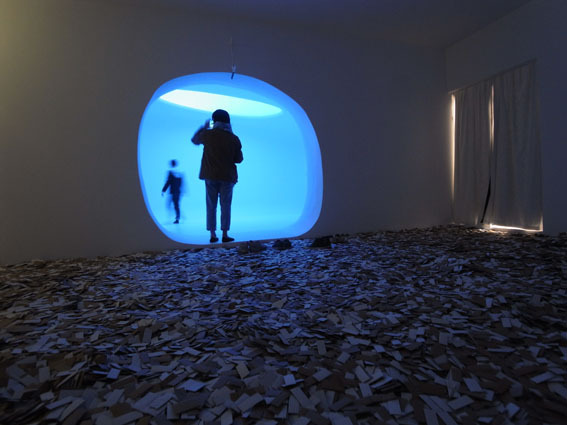
2010
Toshiba Milano Salone "Lucèste"
Suppose Design Office
Okayasu: So, if you create a situation where what you see is beautiful, plus it makes you want to think—it makes you want to use your brain—then even without consciously controlling senses like touch or taste, I think it can still sufficiently stimulate that second sense. Regarding the work currently at Kasuga Grand Shrine, as a "place of faith," the work itself creates a situation that naturally makes you want to think. It's like preparing that guidance for thinking after the visual experience.
Fujita: When I design what people will encounter in my planning, if it doesn't extend to designing motivation, it becomes fleeting, ephemeral. The idea of designing to make people think is eye-opening. Okayasu, have you ever had a project that was a real struggle?
Okayasu: Ultimately, the most difficult projects are the ones that end up being just ordinary lighting plans. When you agonize and struggle, but in the end, you can't do anything, it just becomes a standard lighting plan.
Honestly, about half my work ends up like that. I want to offer something valuable, I have ideas I want to realize, but constraints like limited budgets or failing to fully convince the client mean compromises are made, and the quality drops. Creating something ordinary is the most painful; seeing the finished result is agonizing.
Fujita: That's deep. Have you ever seen someone else's work and thought, "They really nailed it"?
Okayasu: I didn't start out interested in design, so I don't know much about other people's work. I think when you work without experience or knowledge, you end up creating something different from others. There's a possibility that not knowing can actually work in your favor.
Fujita: That sense of distance is important, right? In your daily life, what interests you the most?
Okayasu: Hmm, I wonder. Probably light. Light, or water... I don't really have hobbies. What I do usually is watch the reflections of light on the Sumida River. I'm kind of a useless person (laughs). I just find myself always looking at light somehow. Like staring at streetlights on rainy days.
Fujita: Lighting design is truly your calling, Okayasu-san! Thank you so much for today.
<End>





